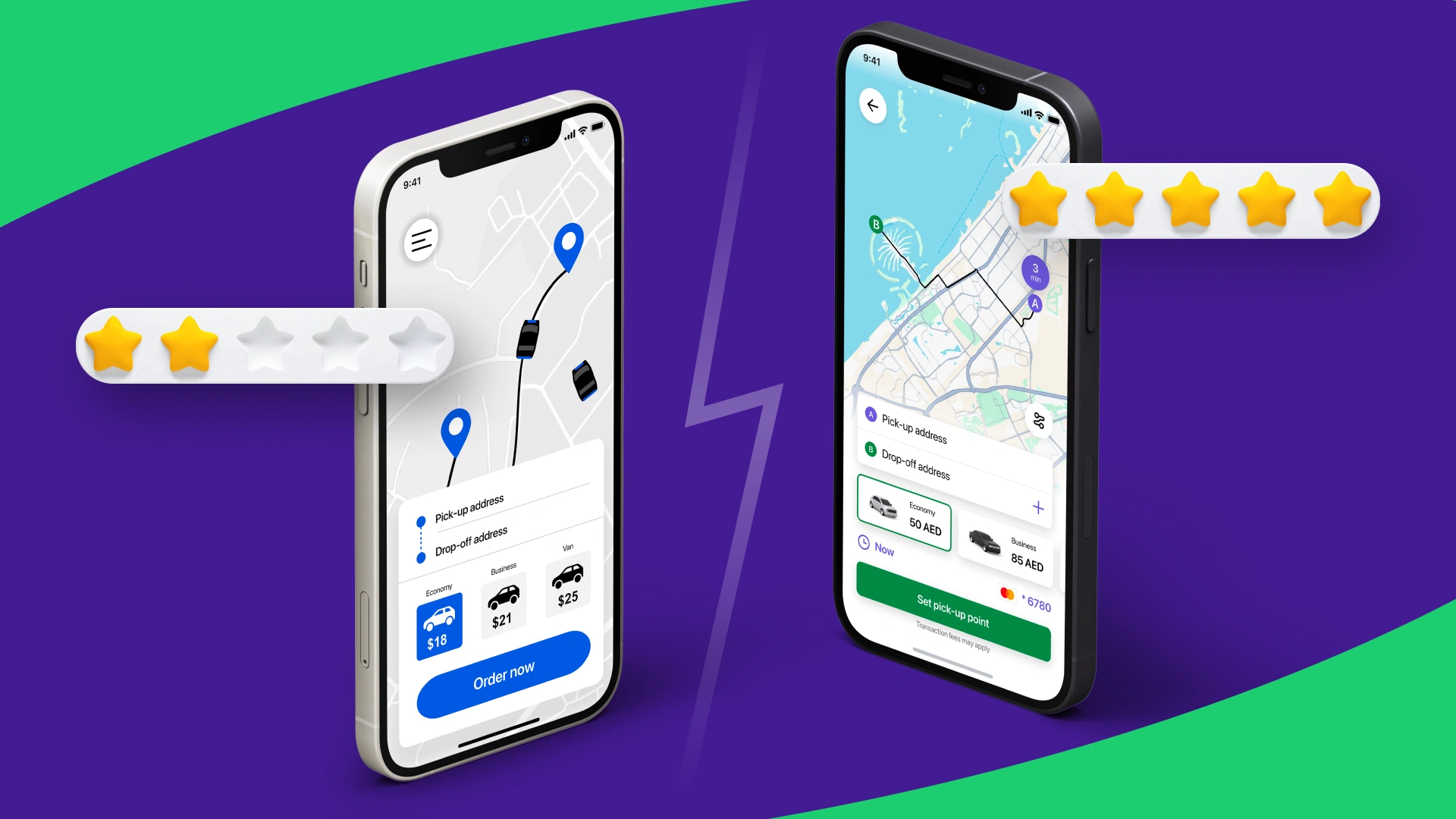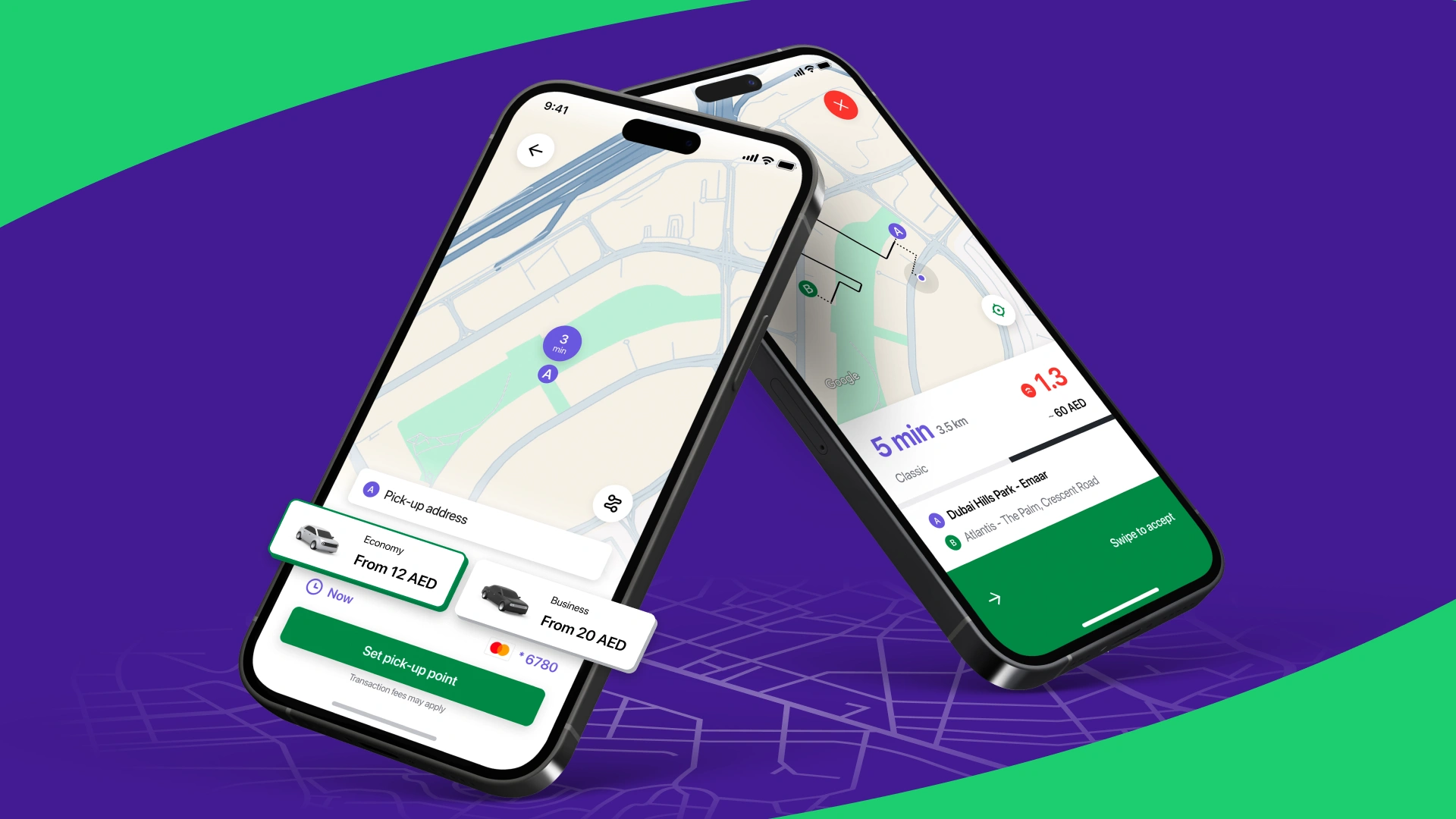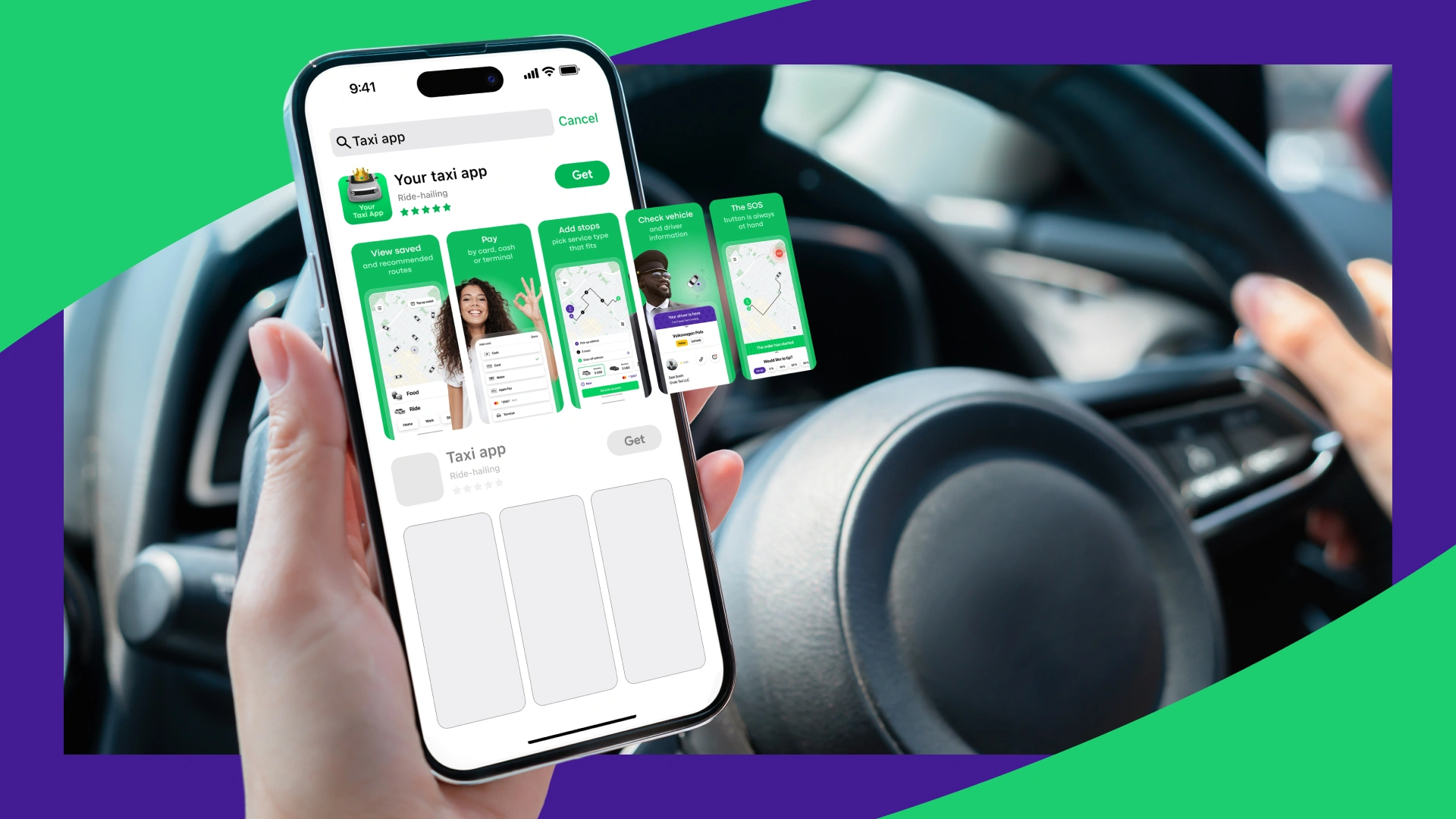7 Rules for Choosing a Ride-Sharing App
Ride-sharing has become a popular and profitable business worldwide. Whether you’re starting a new service or automating an existing taxi company, choosing the right mobility platform is a big decision. There are plenty of fish in the sea and ride-sharing app options on the market. Often enough, it takes months of research to choose the right solution. In this article, we want to make this process just a little easier for you.
Why do you need the ride-sharing apps?
The right tech platform simplifies your work and frees up time for other business activities. You can watch how your ride-hailing apps attract customers and drivers while you’re planning the next big promotion campaign. Isn’t that every business owner’s dream?

Here are seven important things to think about when choosing a set of ride-sharing apps for your taxi service.
1. Avoid clone apps
Cheap clone scripts that copy Uber and similar services might seem appealing at first, but they usually come with serious issues like buggy code, security risks, and no room for scalability. The moment your ride-sharing business grows, they fail you!
Here’s a table where we’ve summarized the advantages and disadvantages of clone apps compared to ready-made solutions.
Clone apps
Pros | Cons |
|---|---|
|
|
|
|
| |
| |
| |
| |
|
So, choose a white-label ride-hailing solution built for long-term goals. These tech solutions come with tested performance, full branding control, and regular technical updates. You’ll be able to grow your taxi service without worrying about breakdowns or limits, which are the biggest source of revenue loss for any transportation company.
Ready-made white-label solutions
Pros | Cons |
|---|---|
|
|
|
|
| |
| |
| |
| |
|
2. Build two connected apps — one for riders and one for drivers
A strong ride-sharing system needs two synced apps:
- Customer app: For people who want to order a cab online, book rides like with Uber, track their trip, make secure cashless payments, and contact the driver.
- Driver app: For drivers to easily accept requests, use navigation, check earnings, and manage availability.
When both apps work smoothly together, you create the safest and most natural ride-sharing app experience for both drivers and passengers. You turn getting a cab into an irresistible habit for drivers. You create an attractive job opportunity for drivers. Neither will refuse.
In addition to the apps, it’s also nice to have a Dispatch system or an Operator app to handle rides from other sources, like a call center.
You can also make use of a Web app - a browser booking solution that makes it possible for a customer to order a cab without downloading the app. This tool is useful for regions with slower internet speeds and for partnerships with other businesses like hotels, tourist agencies, restaurants, and so on.
Finally, there should be an Admin panel to rule them all: manage drivers, control operations, analyse the performance, and spot and correct inefficiencies.
3. Beware of hidden costs & lack of maintenance
Many ride-sharing solutions promise “complete apps” but hide important costs. This is especially the case with “customizable” software that develops every feature additionally. You may end up paying extra for app updates, bug fixes, new features, or even for basic technical support, maps, and SMS service. Over time, these add-ons can become expensive and frustrating. You might also end up paying for every extra driver or extra trip, which will hinder your growth.

Make sure your on-demand software for taxis includes clear pricing, maintenance support, and regular updates. A reliable provider will offer transparent costs and long-term technical assistance, saving you money and stress in the future.
4. Include all the must-have features
Your app should come with all the tools needed to run rides like Uber or other transportation like Uber, including:
- Live tracking and trip details
- Fare estimates and multiple payment options
- SOS button for safety (and Follow My Ride feature for more safety)
- Ratings and reviews
- In-app messaging or calls
- Smart driver assignment
- Ride history and digital receipts
- Admin panel and analytics
These features guarantee that your users with have the best experience with the apps. It also makes it easier for you to manage your operations, reduce inefficiencies such as drivers’ idle time, and take control of the cash flow.
5. Look for more than just technology
When choosing a ride-hailing app provider, don’t stop at technical features. The best companies offer marketing, business, and App Store Optimization (ASO) services to help your app reach users faster.
A strong partner will assist with launch strategy, app visibility, and ongoing promotion — not just software delivery. Look for providers that offer end-to-end business support, including branding, user acquisition, and retention strategies. This ensures your ride share long-distance or quick ride transport business doesn’t just run smoothly but also grows in a competitive market.

Look at Onde’s ASO, marketing and business cases to see the examples of taxi brands becoming more successful with the tech provider’s help.
6. Check reviews and feedback
Before finalizing your platform, check user reviews on sites like Capterra, G2, or Trustpilot. Focus on comments about customer support, update quality, and overall stability.
Learning from others’ experiences will help you choose a reliable and safe ride-sharing app for your business.
7. Choose a trusted and experienced partner
Finally, consider the company’s experience, reputation, and trustworthiness. Go with a tech provider that has been in the market for years, has international recognition, and proven results with clients across multiple regions.

Check how many clients the company has had, go through case studies to explore the clients’ locations and results. Next, look if the company participates in international events, organises conferences or bootcamps, and is recognised as a market leader.
Partnering with an established and respected tech provider gives your business confidence, reliability, and a solid foundation to expand into new markets.
Final Thoughts
Choosing the right ride-hailing app or on-demand software for taxis can make all the difference. Avoid low-quality clones and pick a trusted, cloud-based, white-label solution that lets you offer secure, seamless rides like Uber.

With a scalable and reliable platform, you’ll be ready to grow your quick ride transport business and deliver safe and steady rides for every customer.
